Once you get past the obvious architects with neon names, it’s not easy to define the individuals who have shaped Las Vegas. Maybe it’s because the Strip changes its colors so often, destroying, renovating and renaming. Or maybe it’s because the city’s visitors play such an active role in what will come next.
Tomorrow’s entertainment trends are mysterious, but it’s easy to see today’s hotness. Las Vegas is gunning for a young, hip crowd, and the weapons of choice are massive bottle-popping, celebrity-magnetic glamour palaces of the night loaded with star DJs pumping thunderous dance music. This is our way today.
Who did this? You did. Give the people what they want. But of course, there were those who lit the spark, and two of them were brothers, with a name made famous before they were born. Morton.
It’s difficult to imagine what Las Vegas would look like without Peter and Michael Morton. The Strip goes through tectonic shifts every decade or so, and when these two brothers—there’s almost 20 years between them—began building separate businesses here, they laid the groundwork for the Las Vegas we see today.
Peter Morton co-founded the ridiculously successful Hard Rock Cafe chain, starting in London in 1971 and expanding globally in 1982 until they were everywhere, with the T-shirts to prove it. In 1996, Peter sold them for $400 million; the year before, he’d built the Hard Rock Hotel and Casino just off the Strip on Paradise Road.
“If you look at when the Hard Rock Hotel opened, it was definitely a breath of fresh air for Vegas,” says David G. Schwartz, director of UNLV’s Center for Gaming Research. “At that time, people were building bigger properties on the Strip with much broader appeal, and this one was nothing like that.”
To say it was the place to be wouldn’t be saying enough. The Hard Rock wasn’t a themed casino; it was a niche casino, and the younger set ate it up. Vegas resorts had always attracted the in-crowd and the celebrities of the day, but this was designed specifically for them. With rock music booming, the casino’s rounded, party-ready layout provided the perfect atmosphere for bar or table hopping. It was Vegas, only cooler.
“My dad was the first one to cater to that crowd,” says Harry Morton, the oldest of Peter’s three children. “He had the vision to see there was a market there that really wanted that type of experience. There had been a push for more family-oriented stuff, theme parks, and the Hard Rock pushed the envelope in another direction. It promoted the sin of Sin City.”
The Hard Rock Hotel was greater than the sum of its parts. The casino’s center bar was the first stop for young people driving in for a party weekend from Southern California. The Joint was a game-changing music venue hosting concerts that have taken on mythical status. “When they put that stage up and Aerosmith came in to open the hotel, that was huge,” says Billy Richardson, a Vegas native who runs Block 16 Hospitality and opened RA nightclub at Luxor in 1997. “And if you ask anyone that lives here what was the coolest thing you’ve been to, everyone will tell you it was the Rolling Stones at the Joint. Of course, only 1,500 people went, so you didn’t all really go.”
The Hard Rock had the coolest restaurants, from AJ’s Steakhouse—a tribute to Peter’s father, Arnie Morton—to Pink Taco, Nobu and Simon. It pioneered the pool party with the infamously naughty Rehab, and it brought an edgy nightclub in with Baby’s, the booming basement that would evolve into Body English. It’s difficult to believe, but there was a time when nightclubs didn’t exist in casinos. The Hard Rock had one to compete with a hot spot just a few blocks west—the Drink. It was Michael Morton’s club.
The story of this specific type of cool coming to Vegas begins in Chicago, birthplace of one of the most recognizable restaurant brands in America. Arnie Morton was the son of a restaurateur. “My dad loved to work a room,” says Michael, one of Arnie’s three sons. “He had to touch every table, and he really enjoyed it.”
Arnie opened his first restaurant near Michigan Avenue in the 1950s. Then, in 1960 he partnered with Hugh Hefner and Victor Lownes to open the first Playboy Club in Chicago.
It was a pioneering concept, with stylish decor, separate bar and dining spaces and branded merchandising at every club. Soon there were many all around the world. Arnie helped build the empire for a decade before opening his own clubs and restaurants in Chicago in the 1970s. The first Morton’s Steakhouse launched in ’78, an iconic place where celebrities would flock and you’d always be greeted by the owner.
Arnie sold his seven-restaurant chain in 1987, and today it’s operated by dining giant Landry’s Inc., with dozens of locations across North America, China and Mexico. It’s been in Vegas since 1993, starting life at the back of Fashion Show Mall before moving to its current location at Flamingo and Paradise in 2000.
Arnie died in 2005 at age 83, survived by seven children. His first were twins Peter and Pam. Then Arnie served in the Army infantry in Europe in World War II, “came back a changed guy, got divorced, spent years being a bachelor again, got remarried and had five more children,” says Michael, one of the five from Arnie’s second marriage. And almost all the kids fell into the family business: David and Amy operate restaurants in the Chicago area. Pam, with Peter, launched the nonaffiliated Morton’s restaurant on Melrose Avenue in LA, famous for hosting the annual Vanity Fair Oscar party for years before it closed. Peter’s son Harry is in the business, too. He operates two Pink Tacos in California, plus the Viper Room, and he’s a partner in DeLeon tequila. Harry also owns the Fukuburger restaurant on Cahuenga Boulevard in Hollywood—an offshoot of the popular Vegas food truck.
“This is what we do,” says Michael, who grew up in restaurants, scrubbing floors, washing dishes and occasionally chasing Playboy bunnies. “That part wasn’t so bad. But there wasn’t a defining moment where I knew I wanted to do this. It was just what our life was about.”
He remembers being angry during a young, rebellious period. “I didn’t like that I didn’t have a chance to make a decision on my own. But as I got older, all I could think was, thank God. I got really lucky.”
I meet Michael Morton for a late breakfast at Eat, the hip Downtown cafe on the corner of Seventh and Carson. Its proprietor, Natalie Young, gives him a hug when he arrives. Downtown will be happy to have him. He’s not just opening a restaurant here; he and his partners have purchased a building near the Arts District and plan to establish headquarters in the thriving neighborhood. He looks fit and speaks softly but with assurance, a calm surface that belies a lot of behind-the-scenes activity.
Michael opened his first club in Chicago in 1992. Two years later, he was ready to expand beyond his hometown. First, he went to LA to see Peter and scout potential locations. “I thought a lot about LA, but I just wasn’t feeling it. There were driving challenges, and the liquor laws had you closing at 2 o’clock,” Michael says. “My brother was in construction for the Hard Rock, and he had us looking at some sites he had considered. Ultimately, we ended up buying and building at Harmon and Koval.” The Drink debuted in May 1995, just a few months after the Hard Rock Hotel opened.
The only nightclubs operating in Las Vegas at the time were locals’ spots like the Shark Club. Because of its location, the Drink could appeal to locals and capitalize on nightlife-hungry tourists roaming off the Strip—essentially the same crowd that was digging the Hard Rock. The big draw then was live music, not DJs. You had to be there to believe it, but a disco revival band from LA was all the rage.
“One night Boogie Nights was at the Shark Club, and the other night they were at the Drink,” Richardson remembers. “That was a big deal. They had a main dance floor room with a huge stage, and it was kind of a circular club, but Boogie Nights on Saturdays was it. It was a who’s who. All the hottest chicks were there.”
With little competition, the Drink heated up fast. “We had limousines from up and down the Strip pulling in,” Michael says. “There were no threats at that time. Of course, we know what happens after that. It didn’t take long.”
What happened was Baby’s at Hard Rock, Studio 54 at MGM Grand, RA at Luxor, C2K at Venetian and then Light at Bellagio in 2001.
“Casinos just weren’t targeting this certain segment before,” Richardson says. “Nightclubs were confusing. They couldn’t wrap their heads around these places.” He had to convince executives at Luxor that RA would work. “They didn’t get it. We would stand at the cab line and watch a thousand young people with money leaving the hotel. It took a while to convince them.”
Once they bought in, the casinos adapted aggressively and continue to reap the financial windfall. “It’s definitely been the growth area in the last 10 years,” UNLV’s Schwartz says.
The Drink vs. Hard Rock was only the beginning of competition between Michael and Peter Morton. Next up for Michael was N9NE Group, his nightlife and dining company, which partnered with George Maloof’s Palms with the goal of stealing the Hard Rock’s hip clientele. It didn’t kill the Hard Rock, but it snagged the spotlight and refused to let go.
“There were a couple stressful years,” Michael says. “It was weird that all of a sudden Peter and his folks were walking through the Palms checking out what we’re doing. It was head to head, and it strained our relationship. But later it started to fade, and I guess time heals all.” There was mutual respect and admiration along the way. “Peter’s had such an incredible career. I was honored just to be in competition with him.”
And compete Michael did. N9NE Group’s innovative venues at the Palms included megaclub Rain, the tower-topping Ghostbar and sizzling N9NE Steakhouse, a brash take on Arnie’s original concept and the precursor to loud, clubby restaurants that dominate the Strip today. Michael also completed the family circle by working with Hef’s daughter and Playboy executive Christie Hefner to re-establish the Playboy Clubs, operating one at the Palms from 2006 to 2012.
Sadly, Arnie died the year before the new Las Vegas club opened. “That was significant for me, and I wish my dad would have made it,” Michael says. “He knew we were working on it.”
Michael expanded at the Palms with Moon nightclub and Nove Italiano restaurant. Meanwhile, Peter cashed out, selling the Hard Rock to Morgans Hotel Group in 2006 and taking in more than 95 percent of the profits from the $770 million deal, right before the recession would deeply wound Las Vegas. Harry’s restaurant was part of the sale.
“Peter took his chips off the table in Vegas,” Michael says, “and he sold out at the very top.”
As they do, times got tough. Michael’s exit from N9NE Group and the Palms was messy and litigious. In 2010, he opened La Cave at Wynn, spurring a lawsuit from Maloof. Crippled by the recession, the Palms was forced to bring on corporate partners to eradicate debt, ultimately leaving the Maloof family’s ownership stake at just 2 percent. In an early 2011 settlement, the Palms took ownership of N9NE Group’s venues, and Michael sold his interests. Tragically, Michael’s childhood friend and N9NE Group partner Scott DeGraff committed suicide that November.
Michael says he remains thankful for his experience at the Palms. “We had a great run for a long time. … Unfortunately, Las Vegas took a real pounding. Everything short-circuited, and we got caught up in that.”
Maloof declined to be interviewed for this story.
Still, the template established by the Hard Rock Hotel and enhanced by the Palms is everywhere today. You can sense that vibe, that design, that edge at Aria and Cosmopolitan, and in the plans and renderings for the SLS and Gansevoort.
Michael is far from finished in Las Vegas. It’s home now and has been for his wife and three kids for a decade. He’s working on two new high-profile restaurants: La Comida will be a Mexican joint in the hottest possible location Downtown, and he’s also signed a deal to develop the space at MGM Grand vacated by Michael Mina’s Nobhill. La Cave at Wynn has found its niche and developed a nice local following for a Strip venue. And Michael’s found his niche, too. He says he’s unlikely to get back into the Vegas nightclub scene, preferring to develop and spend time in restaurants, like his dad.
Peter spends his time as a full-time dad and art collector, Michael says. Harry plans to return to Vegas to install a new Pink Taco somewhere on the Strip in early 2014 and maybe a local Fukuburger restaurant, too. “Vegas is resilient,” Harry says. “With the economy looking up, it’s time to come back and explore.”
And the Mortons remain connected. Harry consults with his father frequently; Peter is an investor in Pink Taco and in Michael’s La Cave; Michael is an investor in Amy’s restaurant, Found; Amy is an investor in David’s restaurants. The family legacy is beyond legitimate, but they don’t seem to reflect on it much. “I don’t really think about things like that, I just try to take what I’ve learned from my family and hope to use those values and beliefs to build my company the way they built theirs,” Harry says.
A rock ’n’ roll casino and a locals-friendly nightclub might not have imparted fear in the powers that be 18 years ago, but looking around today, their influence is clear. Trends will shift again. And maybe then, the moves the Mortons made in Las Vegas will be better recognized as true innovation.
“I think about it sometimes,” Michael says. “That period around 1995, when the Hard Rock opened and we opened (the Drink), that was a game-changing time. It was exciting and fun and kind of a sea change for the city. We think back on it, but not too much. We’re focused on what we’re doing today.”
Will La Comida be a Downtown game-changer?
The Downtown restaurant boom hasn’t been very boomish, relatively speaking. There wasn’t much to begin with, so a few new eateries made a seemingly resounding impact. If a major player were to set up shop on East Fremont, that would be huge, right?
Michael Morton is that player. La Comida is set to open April 29 at 106 Sixth St., a space you didn’t know existed between Fremont and Carson. It was a laundry facility for El Cortez, and Morton is wrapping a complete rebuild on the 3,000-square-foot structure that will add a sidewalk cafe and a block wall leading into the alley that runs behind Beauty Bar.
Why Mexican food? “What makes you feel better than sitting in a great Mexican restaurant with friends and family?” Morton says. “There’s a demand for it. The style of food and price point is the right fit for Downtown.” The chef is Pablo Sanchez-Ortiz, a veteran of Strip kitchens at Wynn and Cosmopolitan. The food will be traditional and familiar, the cocktails authentic.
Morton sounds excited, but he’s no Downtown bandwagon jumper. Buying in was an evolution. “If you talk to Las Vegans who have been around awhile, they’ll tell you the same thing: I’ve been hearing Downtown’s coming back for the last 20 years,” he says. “But now you can come down here and see it, whether you’re having lunch on Third Street or dinner at Le Thai. People are shocked. And you know, it takes time to create things that affect the culture. Those kinds of things are happening now Downtown.”
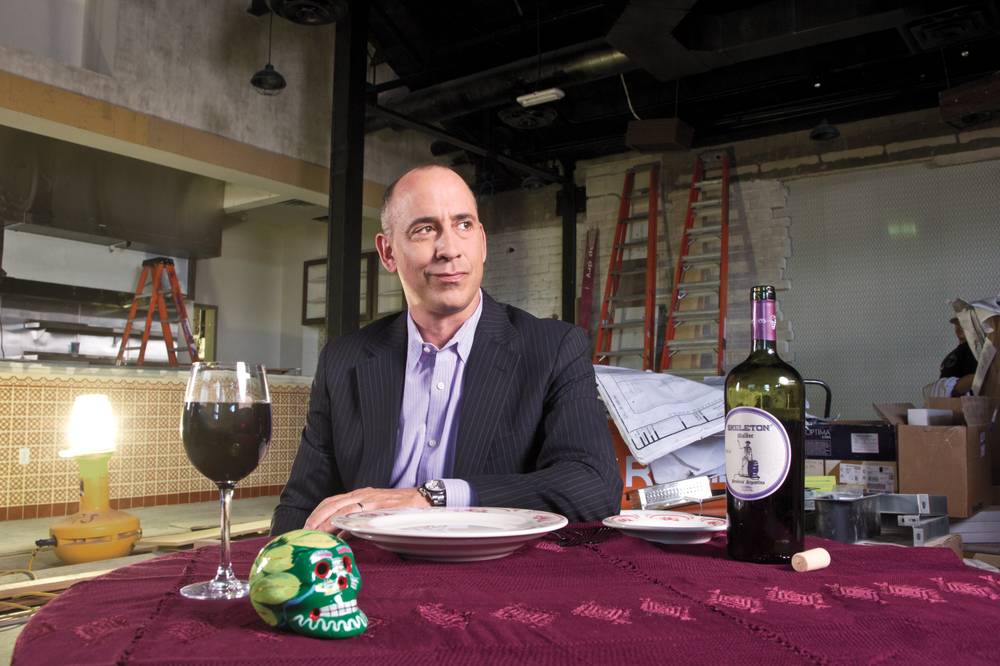
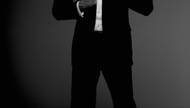
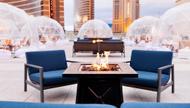

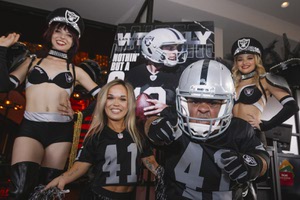
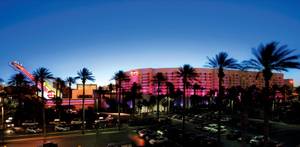
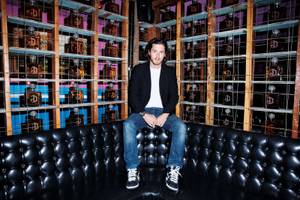
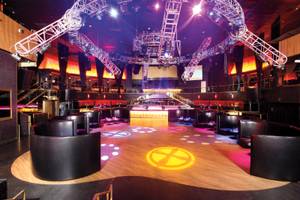
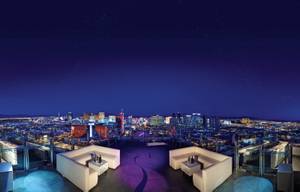

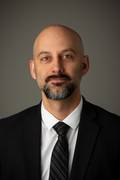
Previous Discussion: